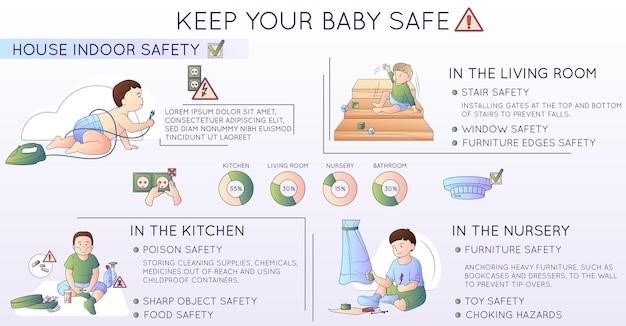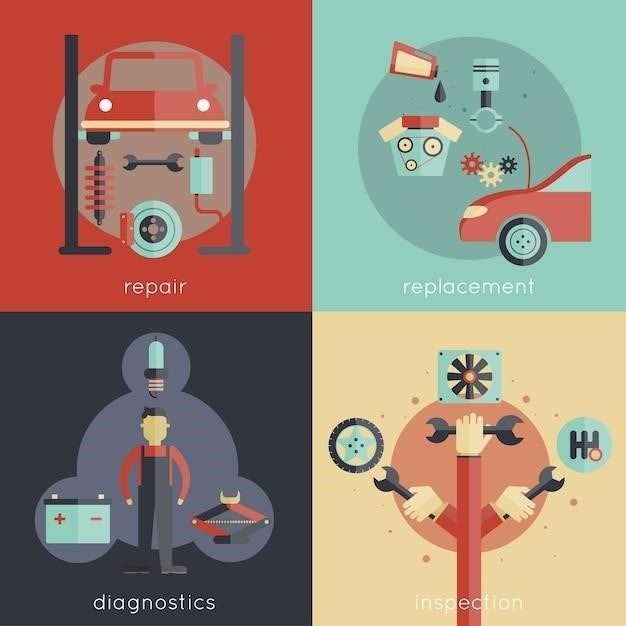Troy-Bilt Pony 42⁚ A Comprehensive Overview
The Troy-Bilt Pony 42 riding lawn mower boasts a 42-inch cutting deck, a powerful engine (often a Briggs & Stratton), and a 7-speed transmission for versatile mowing․ Its Step-Thru design ensures easy access, while features like reverse mowing enhance convenience․ Comprehensive manuals and readily available parts contribute to its user-friendliness and longevity․

Engine and Performance
The Troy-Bilt Pony 42 typically features a powerful engine, often a single-cylinder Briggs & Stratton, known for its reliable starting and consistent performance․ While specific horsepower may vary slightly depending on the model year, it generally delivers sufficient power for efficient mowing of mid-sized lawns․ The engine’s performance is crucial for tackling various terrains and maintaining a consistent cutting speed․ Online resources and owner manuals often provide detailed specifications regarding engine size, type, and recommended maintenance schedules to ensure optimal performance and longevity․ Understanding your engine’s capabilities is vital for safe and effective operation․ Proper maintenance, as outlined in the user manual, is key to maximizing the engine’s lifespan and preventing costly repairs․ Regular oil changes, air filter cleaning, and spark plug checks contribute to the engine’s overall health and efficiency, ensuring consistent performance season after season․
Cutting Deck and Features
The Troy-Bilt Pony 42’s defining characteristic is its 42-inch cutting deck, constructed from durable steel for long-lasting performance․ This wide cutting path significantly reduces mowing time compared to smaller decks, making it ideal for larger yards․ The deck’s design facilitates efficient grass cutting and collection, minimizing clumping and ensuring a clean, even cut․ Many models offer adjustable cutting height, allowing you to customize the mowing length to suit your preferences and the type of grass․ Features like mulching capabilities (on some models) further enhance its versatility․ The deck’s robust build quality ensures resistance against wear and tear, even under demanding conditions․ Regular cleaning and maintenance, as recommended in the owner’s manual, are essential for maintaining the deck’s efficiency and preventing rust or damage․ A well-maintained cutting deck contributes to a consistently smooth and even cut, enhancing the overall appearance of your lawn․
Transmission and Speed Control
The Troy-Bilt Pony 42 typically features a 7-speed manual transmission, offering a wide range of speeds to tackle various terrains and mowing conditions․ This allows for precise speed control, enabling you to adjust the pace according to the density of the grass or the complexity of the yard’s layout․ The transmission’s design ensures smooth shifting between gears, providing a comfortable and controlled mowing experience․ The ability to select an appropriate speed minimizes strain on both the engine and the operator․ The manual transmission gives the operator complete control over the mower’s speed, unlike automatic models․ This manual control is particularly useful when navigating obstacles or working on uneven terrain․ A well-maintained transmission is crucial for optimal performance and longevity of the mower, therefore adhering to the manufacturer’s recommended maintenance schedule, including regular lubrication and inspection, is paramount․ The operator’s manual provides detailed instructions on proper transmission operation and care;
Maintenance and Repair
Regular maintenance is key to prolonging the life and performance of your Troy-Bilt Pony 42․ The owner’s manual provides a detailed schedule for routine tasks, including oil changes, air filter cleaning or replacement, and blade sharpening․ Keeping the cutting deck clean and free of debris is crucial for efficient operation and prevents damage․ Inspecting belts, checking tire pressure, and lubricating moving parts are also important maintenance steps․ For more complex repairs or if you encounter problems beyond simple maintenance, consult the manual’s troubleshooting section․ If the issue persists, consider contacting a Troy-Bilt authorized service center or a qualified small engine repair shop․ Remember to always disconnect the spark plug before performing any maintenance or repair work to prevent accidental starting․ Genuine Troy-Bilt parts are recommended to ensure proper fit and function․ Many parts are readily available online or through authorized dealers․ Regular maintenance not only extends the life of your mower but also ensures its safety and optimal performance․
Troubleshooting Common Issues
The Troy-Bilt Pony 42, like any machine, can experience occasional problems․ A common issue is difficulty starting․ Check the fuel level, ensure the spark plug is properly connected and functioning, and verify the battery charge; If the engine runs roughly or stalls, inspect the air filter and clean or replace it if necessary․ Examine the fuel lines for clogs or leaks․ Blade issues, such as uneven cutting or a lack of cutting power, might indicate dull blades requiring sharpening or replacement․ A clogged cutting deck can also lead to poor cutting performance; regular cleaning is essential․ Problems with the transmission, such as difficulty shifting gears, may require lubrication or adjustment, as detailed in the owner’s manual․ If the mower makes unusual noises, immediately stop operation and inspect for loose components or potential damage․ Before attempting any repairs, refer to the troubleshooting section in your Troy-Bilt Pony 42 manual․ This guide often provides solutions to common issues and detailed instructions for maintenance and minor repairs․ For more complex problems, seeking professional assistance from an authorized repair center is recommended․
Safety Precautions and Operation
Operating the Troy-Bilt Pony 42 safely is paramount․ Before each use, inspect the mower for any damage or loose parts․ Ensure all safety guards are properly installed and functioning correctly․ Never operate the mower without wearing appropriate safety gear, including sturdy shoes, eye protection, and hearing protection․ Keep children and pets away from the operating area․ Avoid mowing in wet or slippery conditions to prevent loss of control․ Always be aware of your surroundings and watch for obstacles․ Never reach under the mower deck while the engine is running․ When refueling, turn off the engine and allow it to cool completely before adding fuel․ Store fuel in a properly sealed container away from open flames or sparks․ Be cautious when operating near slopes; avoid sharp turns and maintain a slow speed to prevent tipping․ Familiarize yourself with the mower’s controls and operating procedures before starting․ Use the parking brake whenever the mower is idle or unattended․ Regularly check the blade’s sharpness and condition to maintain optimal cutting performance and prevent accidents․ Proper maintenance, as described in your owner’s manual, is crucial for safe and efficient operation․ In case of any malfunction, stop the engine immediately, and address the issue before resuming operation․
Parts and Accessories

Numerous parts and accessories are available for the Troy-Bilt Pony 42, enhancing its functionality and extending its lifespan․ Essential parts include blades, belts, spark plugs, air filters, and various other engine components readily sourced through Troy-Bilt’s website, authorized dealers, or online retailers specializing in outdoor power equipment parts․ For routine maintenance, replacement blades are crucial for maintaining a clean cut․ Belts drive the cutting deck and other components; timely replacement prevents breakdowns․ Spark plugs and air filters ensure efficient engine performance․ Beyond essential maintenance parts, a wide array of accessories can be added to customize the Pony 42․ These accessories may include mulching kits, allowing for finer grass clippings and improved lawn fertilization, or grass collection bags for cleaner operation․ Weight boxes can increase traction on uneven terrain, while attachments like tow hitches provide versatility for various yard tasks․ Some models offer optional features like headlights for improved nighttime visibility․ Always refer to the owner’s manual for compatibility and installation instructions before purchasing or installing any part or accessory to ensure proper fit and functionality and to avoid voiding any warranty․
Manuals and Resources
Accessing comprehensive manuals and resources is crucial for understanding and maintaining your Troy-Bilt Pony 42 riding lawn mower․ The owner’s manual, a vital document, provides detailed instructions on assembly, operation, safety precautions, and routine maintenance procedures․ It’s often available as a downloadable PDF on the Troy-Bilt website, requiring the model and serial number for accurate retrieval․ This manual is your primary source for troubleshooting common issues and understanding the mower’s features․ Beyond the owner’s manual, additional resources can greatly assist in maintaining and repairing your Pony 42․ Online forums dedicated to Troy-Bilt or lawn mower repair can be invaluable for seeking advice from experienced users, sharing insights, and finding solutions to specific problems․ These online communities often provide a wealth of practical tips and troubleshooting guides․ Furthermore, authorized Troy-Bilt service centers are excellent resources for professional repairs and maintenance․ They can provide expert assistance, genuine parts, and guidance on more complex issues beyond the scope of the owner’s manual․ Remember to always consult the official Troy-Bilt website for the most up-to-date information on manuals, parts diagrams, and service center locations․
Warranty Information
Understanding the warranty coverage for your Troy-Bilt Pony 42 is essential for protecting your investment․ Warranty terms vary depending on the specific model year and retailer, so it’s crucial to consult your original purchase documentation or the Troy-Bilt website for precise details․ Generally, Troy-Bilt offers limited warranties covering defects in materials and workmanship for a specific period․ This typically includes the engine, transmission, and other major components․ The warranty may cover parts replacement or repair, but labor costs might be the responsibility of the owner․ It’s important to note that warranties usually don’t cover damage caused by misuse, neglect, accidents, or normal wear and tear․ Proper maintenance, as outlined in the owner’s manual, is vital for maintaining warranty eligibility․ Keeping detailed records of your purchase date, model number, and any maintenance performed can be beneficial if you need to file a warranty claim․ Contacting Troy-Bilt customer service or an authorized dealer promptly if you encounter any issues is crucial․ They can guide you through the warranty process and determine if your problem is covered․ Be prepared to provide proof of purchase and a description of the issue when contacting customer service․ Remember, understanding and utilizing your warranty can save you significant costs in the event of unexpected repairs․



























